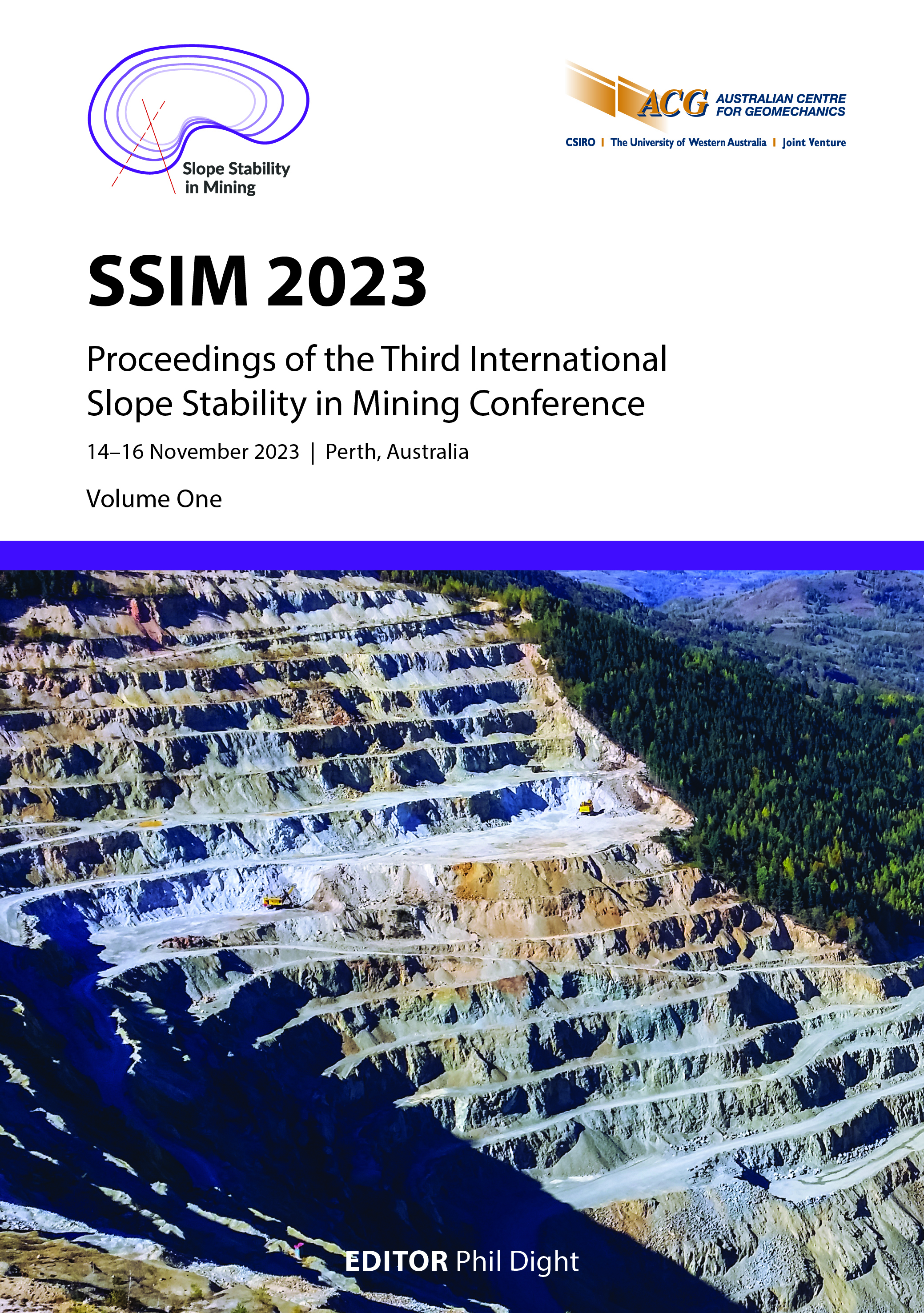The use of random limit equilibrium models to enable the selection of equivalent shear strength parameters in spatially variable heterogenous weak rock masses from the Pilbara basin

|
Authors: Tirado, JG; Maldonado, A |
DOI https://doi.org/10.36487/ACG_repo/2335_29
Cite As:
Tirado, JG & Maldonado, A 2023, 'The use of random limit equilibrium models to enable the selection of equivalent shear strength parameters in spatially variable heterogenous weak rock masses from the Pilbara basin', in PM Dight (ed.), SSIM 2023: Third International Slope Stability in Mining Conference, Australian Centre for Geomechanics, Perth, pp. 459-466, https://doi.org/10.36487/ACG_repo/2335_29
Abstract:
Heterogenous weak rock masses, catalogued as either detrital material or channel iron ore deposits, can typically be found in the uppermost stratigraphic layer of Pilbara iron deposits. Due to the nature of their formation, their composition and strength properties can be highly variable within a deposit. This raises the question of whether a single, statistically selected strength design parameter has the potential to properly represent the multi-parameter scenario most likely to be encountered in a weak rock mass slope failure, as it intersects materials that are spatially variable. The following paper provides a statistical comparative analysis of heterogeneous models built with a random spatial distribution (30 with a positive distribution and 30 with a uniform distribution) and models built with a homogeneous single design value. To accomplish this, limit equilibrium stability analyses were undertaken using Slide2®. Both types of models were set with Hoek and Brown shear strength criteria, and the uniaxial compressive strength (UCS) parameter, ranging from extremely weak rock to extremely strong rock, was selected as a benchmark for the two types of models. The comparison was made over the 60 models mentioned above by replicating the resulting slip surface and the Factor of Safety (FoS) of the heterogeneous models in the homogeneous models. Then, homogeneous models were back analysed to obtain the corresponding UCS for the FoS being analysed in each model. Finally, the back analysed homogeneous UCS was compared with a weighted UCS from heterogeneous models obtained by measuring the length of the slip surfaces that intersect every material zone. Additionally, the same routine was applied to site-specific data of channel iron deposits. The results of this analysis clearly show that despite the variability of strength parameters that might be present in this type of material, it is appropriate to use a single design value for this material when potential rock mass failures are analysed. Although, the results show that a 50th or 65th percentile for UCS can be related to the slip surface with a minimum FoS, this paper does not attempt to propose the use of these statistical values in practice because the models presented here do not follow any spatially random variability rules, such as correlation distance as formulated in Slide2.
Keywords: random limit equilibrium models, UCS selection, spatially variable models, detritals
References:
Javankhoshdel, S, Cami, B, Bathurst, R, Yacoub, T & Corkum, B 2017, ‘Probabilistic analysis of cohesive-frictional slopes using the RLEM (circular and con-circular) and the RFEM’, Proceedings of 70th Canadian Geotechnical Conference, Canadian Geotechnical Society and the Canadian National Chapter of the International Association of Hydrogeologists, Ottawa,
Morris, RC 1994, Detrital Iron Deposits of the Hamersley Province, Commonwealth Scientific and Industrial Research Organisation,
Sung-Chi, H & Nelson, P 2006, ‘Material spatial variability and slope stability for weak rock masses’, Journal of Geotechnical and Geoenvironmental Engineering, vol. 32, pp. 183–193.
© Copyright 2024, Australian Centre for Geomechanics (ACG), The University of Western Australia. All rights reserved.
View copyright/legal information
Please direct any queries or error reports to repository-acg@uwa.edu.au
View copyright/legal information
Please direct any queries or error reports to repository-acg@uwa.edu.au

